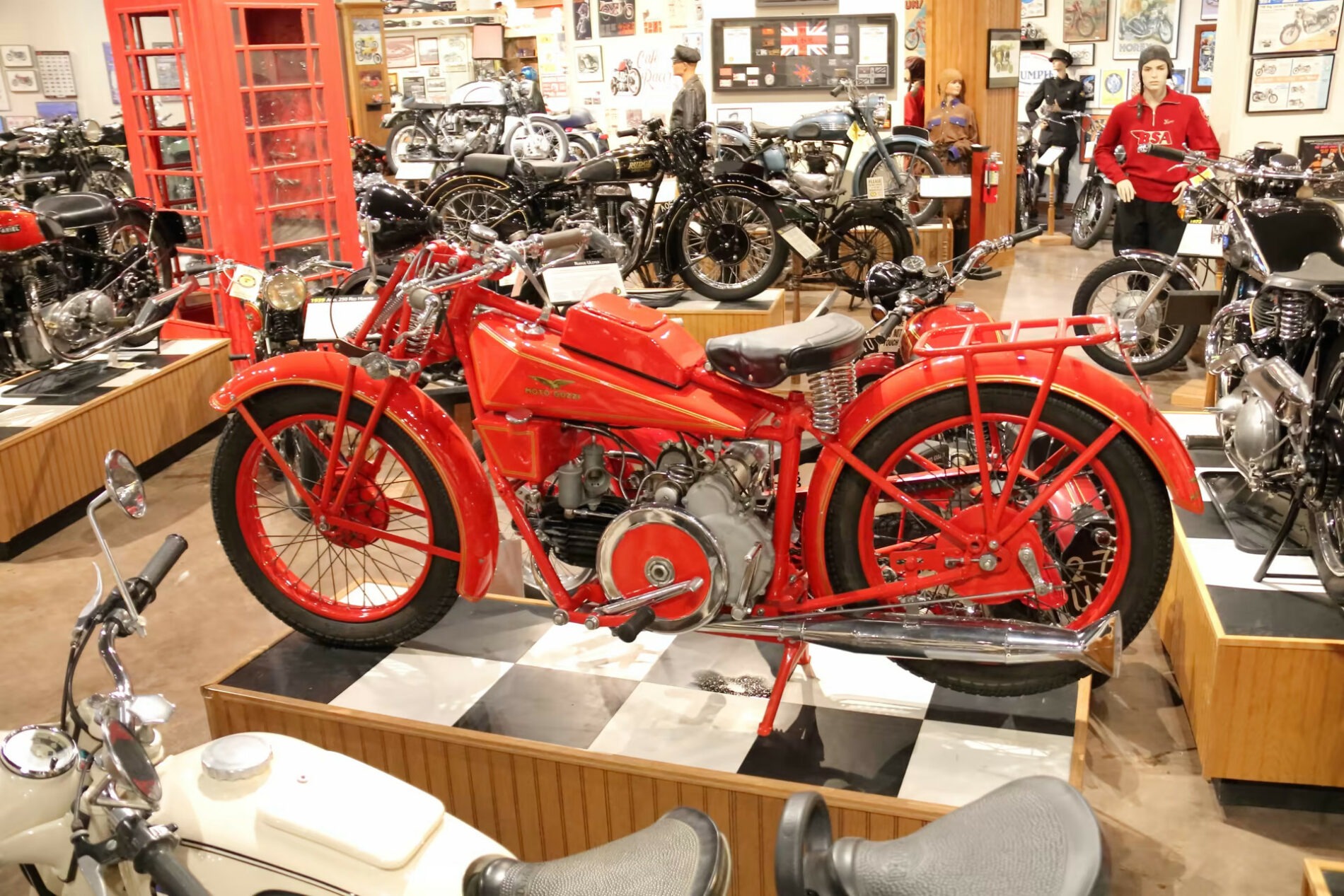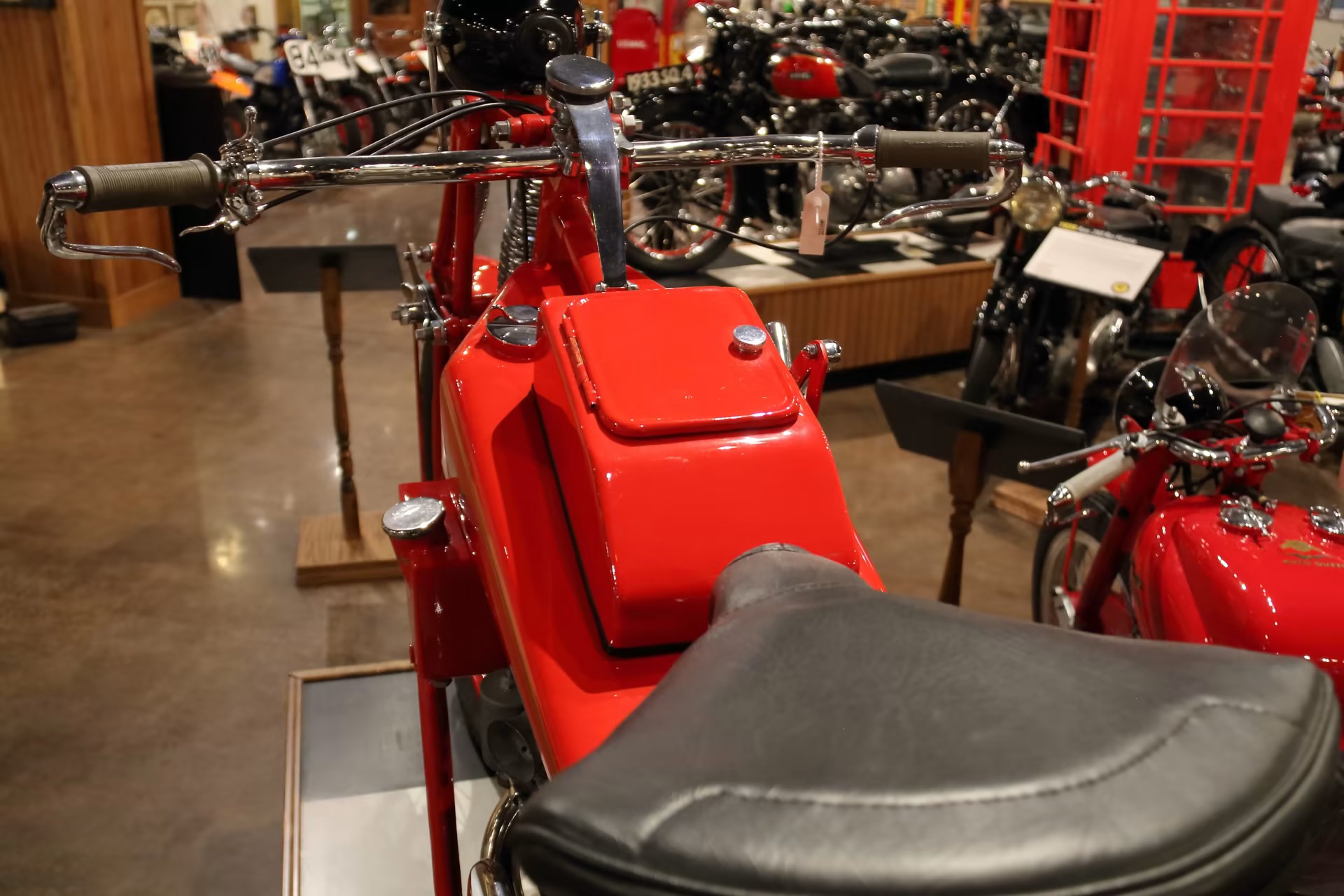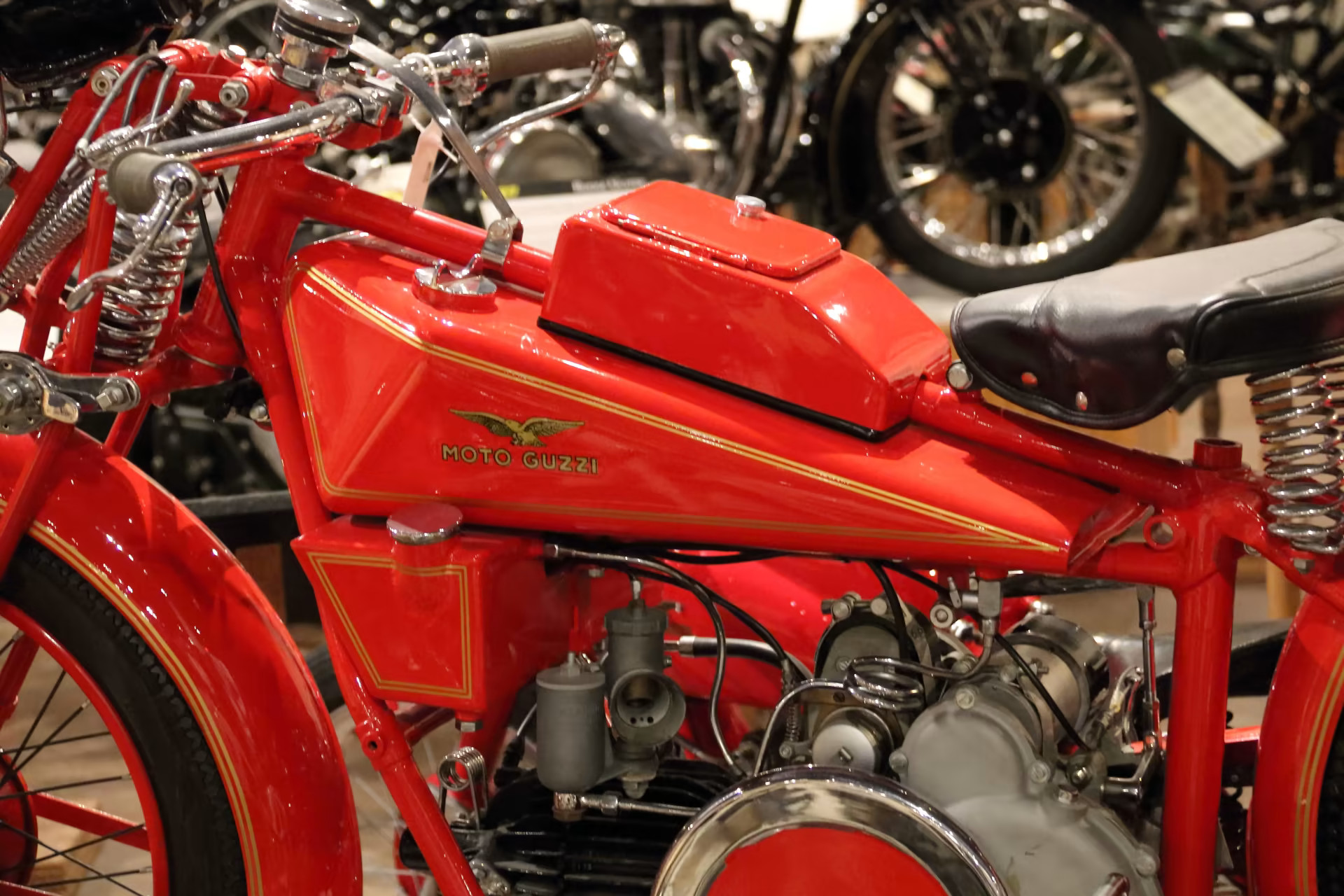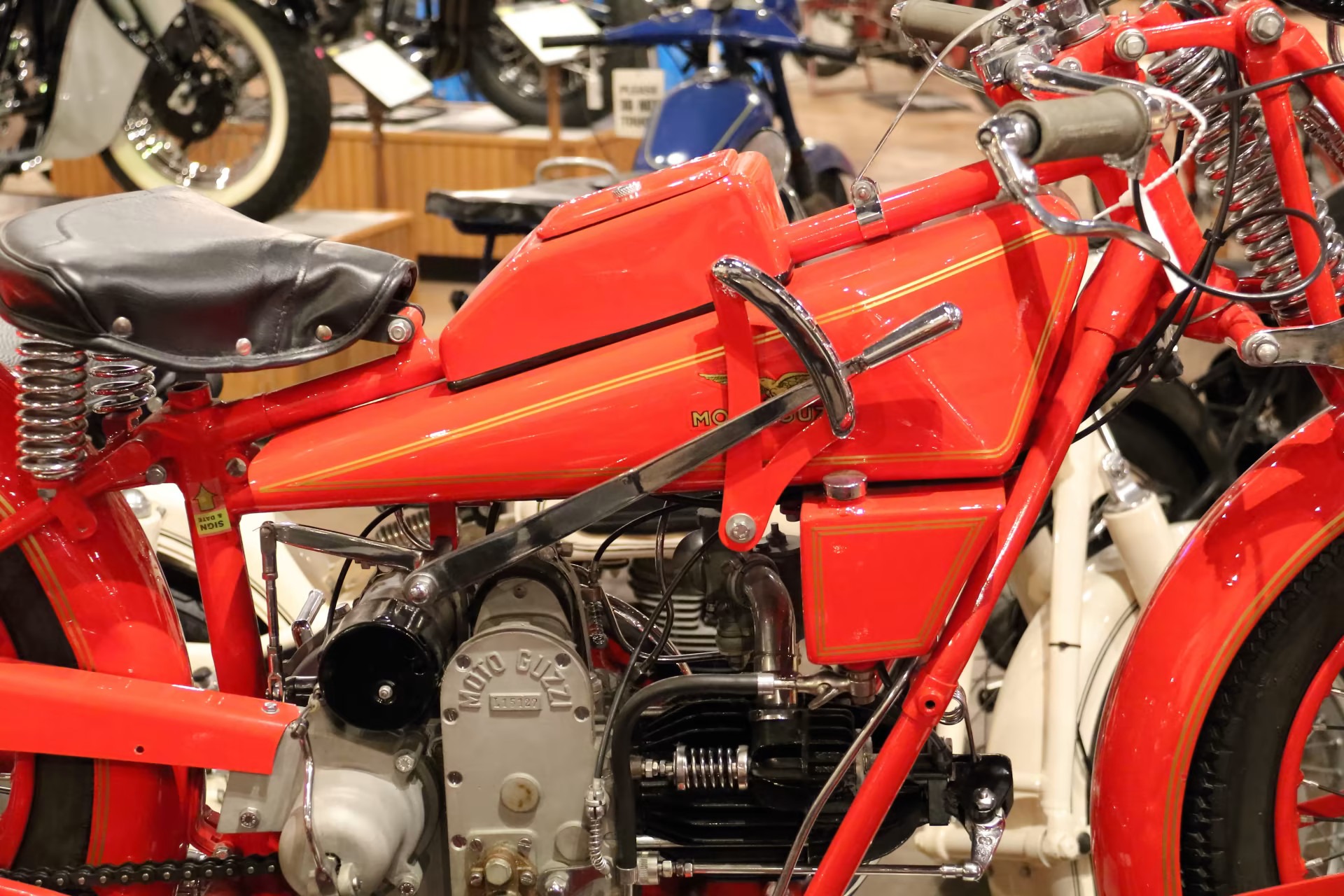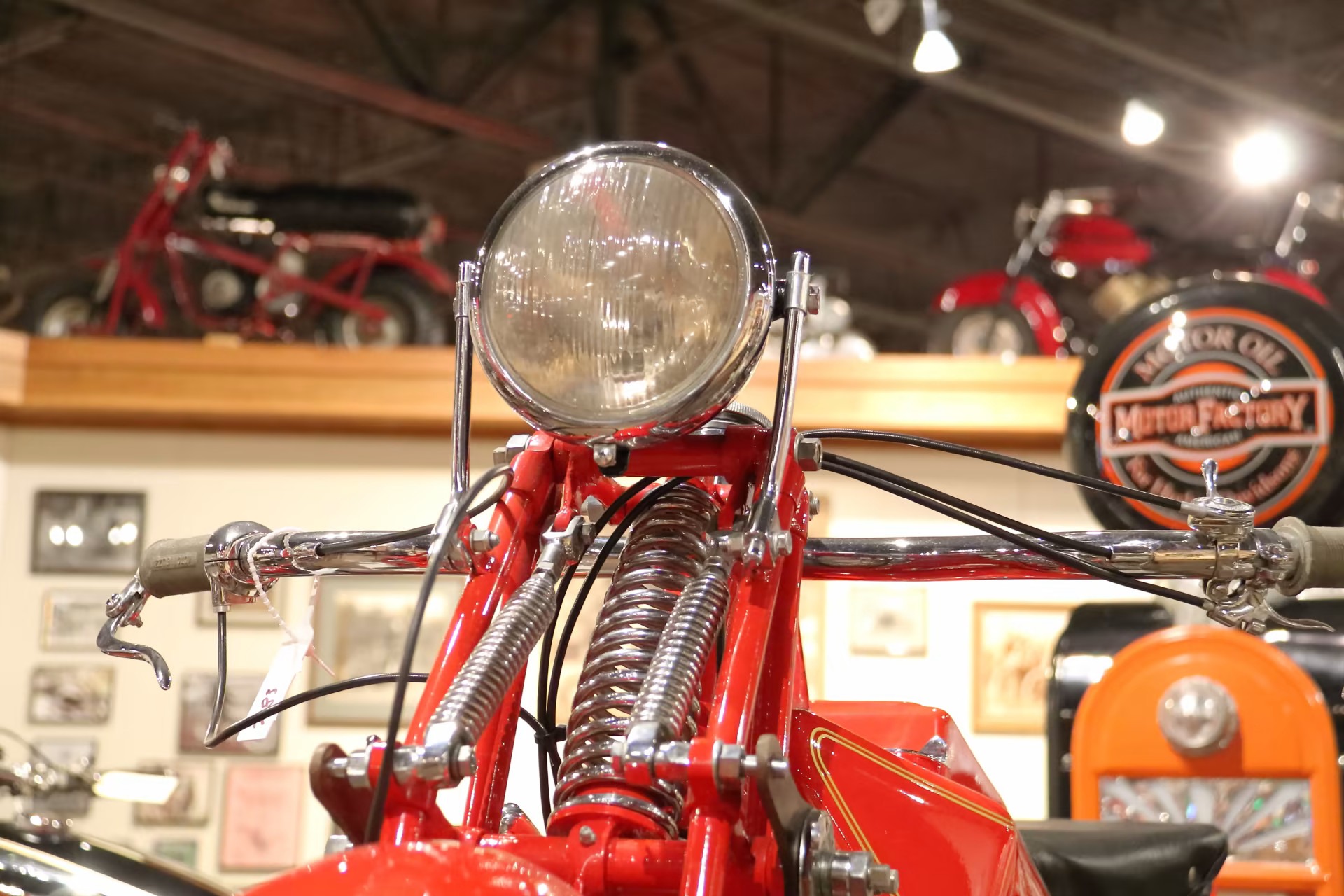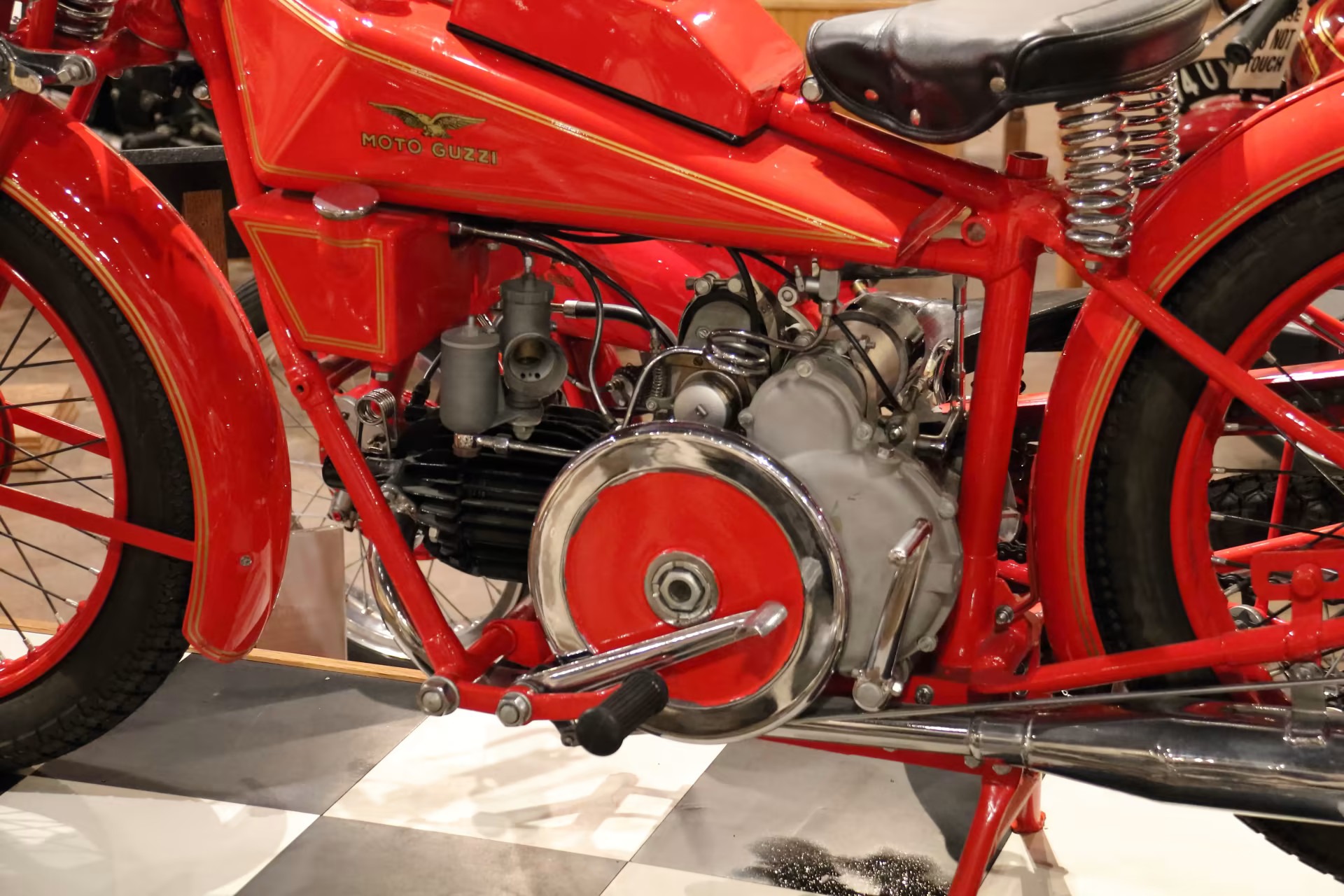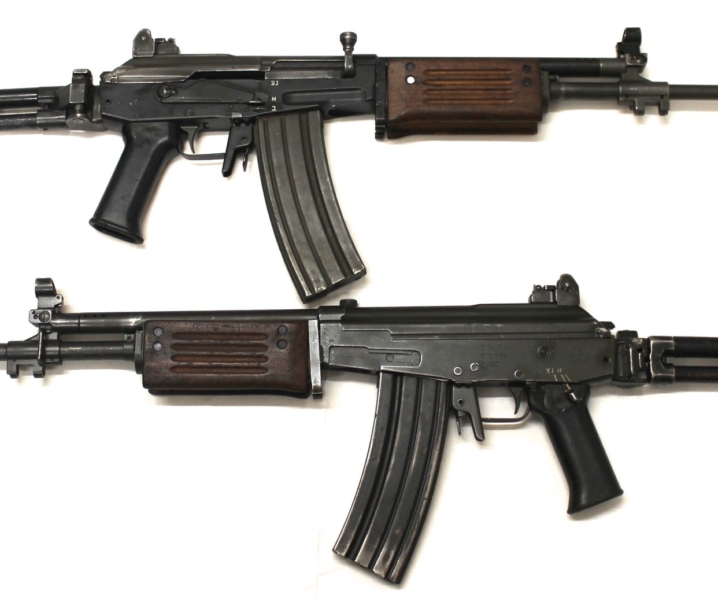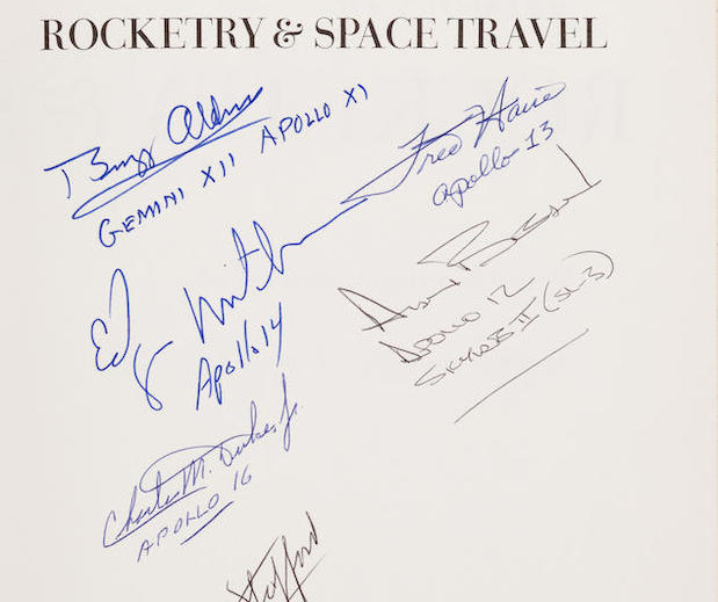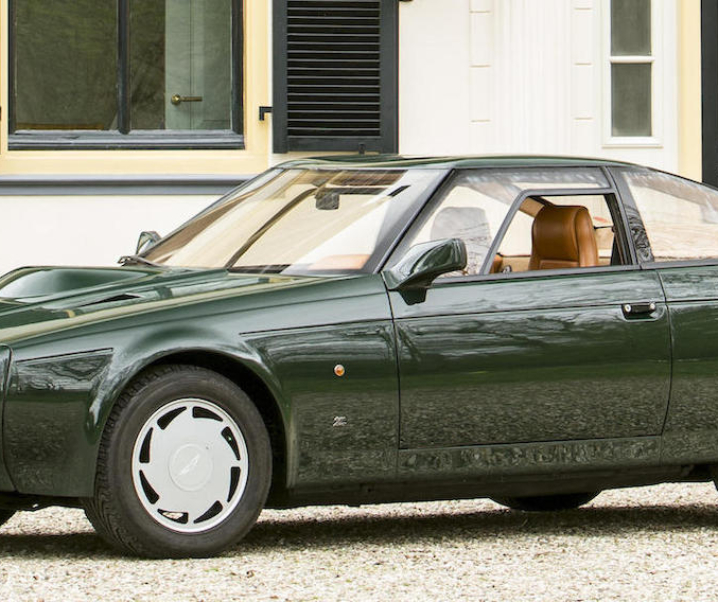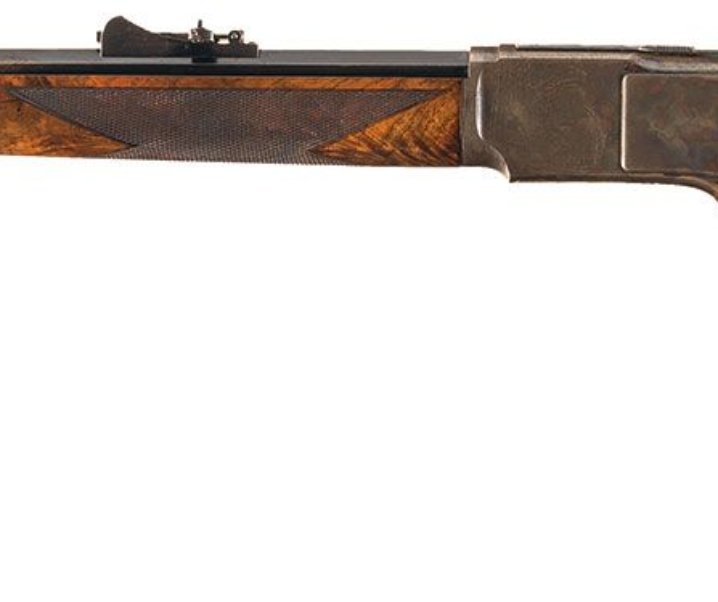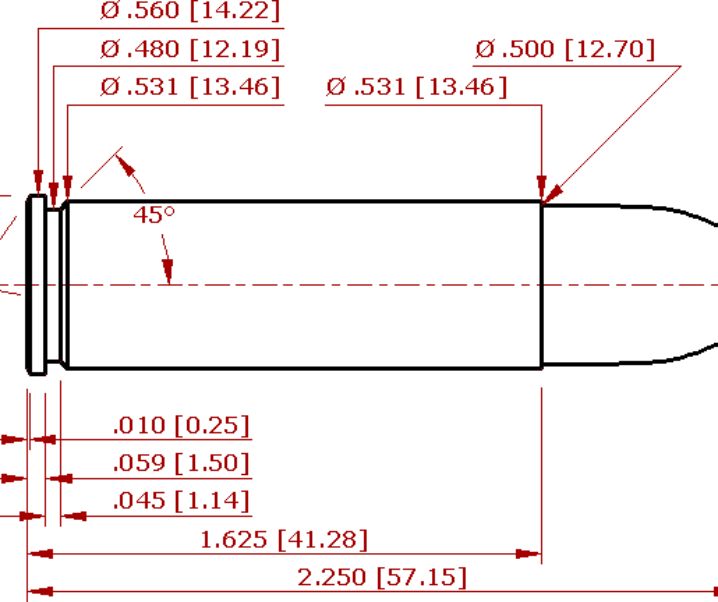The Moto Guzzi story began during the First World War when a friendship formed between three men; Giorgio Parodi, Giovanni Ravelli, both pilots, and Carlo Guzzi, an aviation mechanic. These three were to form the vision that would become Moto Guzzi, one of Italy’s most prominent motorcycle manufacturers.
Their story began with a tragedy, but bloomed into the success it has become today.
Fast Facts
- Moto Guzzi was formed out of a wartime friendship between three young men; Giorgio Parodi, Giovanni Ravelli, and Carlo Guzzi.
- Carlo Guzzi’s ambition was to design and manufacture an advanced motorcycle with a double-valve and double-ignition SOHC engine and he built a prototype which was called the G.P. 500.
- For actual production however Guzzi was forced to put that dream aside and instead build his first production motorcycle with an Exhaust Over Inlet (EOI) engine.
- He named this first production model the “Normale”, possibly because he’d had to give up on making his radical dream bike and instead make a bike that was “normal”.
- An early Moto Guzzi Normale said to be from 1920 is being offered for sale by Mecum Auctions over September 6-9, 2023. This bike comes from the John Parham Estate Collection.
The germ of the idea that would become Moto Guzzi began in Carlo Guzzi’s mind well before the outbreak of the First World War. As a young man the death of his father put his family under financial stress which saw him getting work in a mechanical workshop run by a man named Giorgio Ripamonti where he was introduced to internal combustion engines and began to gain an understanding of their workings.
The young Carlo became so adept in his knowledge about and ability to work with engines that he managed to get a job with Isotta Fraschini testing and evaluating their engines.
These events paved the way so that when Italy entered the First World War he was enlisted in the Italian Royal Marines airforce as an Engine Marshal, working on combat aircraft engines.
By this time Carlo was already thinking creatively about engine design, believing that he could improve on the designs of the day to create a motorcycle engine that was reliable, powerful, and more fuel efficient.
In his time in the Italian Royal Marines Carlo became friends with two men who would become great sources of encouragement to him, and who would each play a part in the move from Carlo’s vision for a new motorcycle company, to bringing that vision into reality. These were Giorgio Parodi and Giovanni Ravelli.
Giorgio Parodi was the son of prominent Genoese ship owner Emanuele Vittorio Parodi, and his father was persuaded to finance the venture, and his son Angelo also came on board.
Giovanni Ravelli was a highly skilled and experienced pilot and motorcycle racing aficionado.
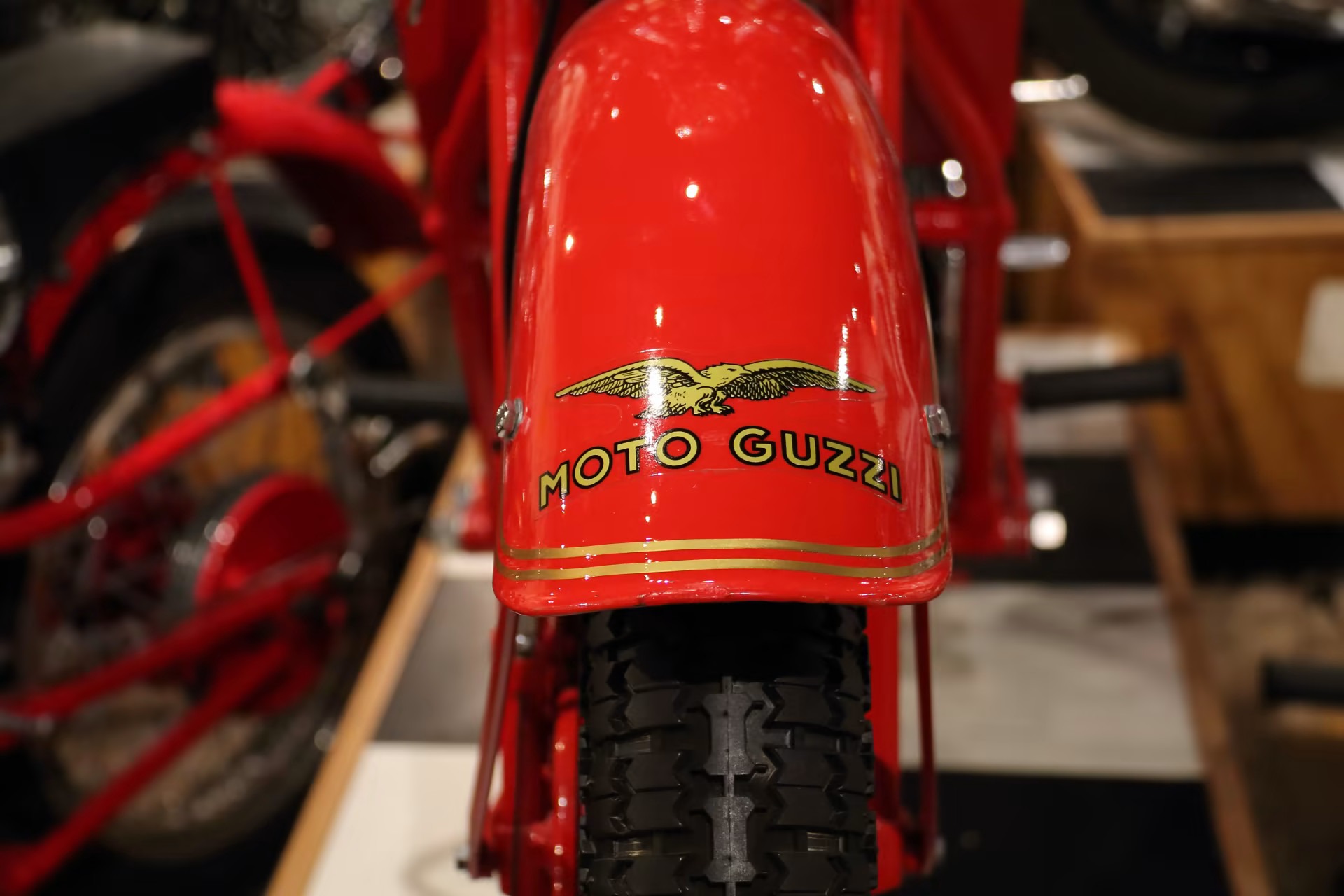
The rough job descriptions for each of the three were that Carlo would be in charge of design and engineering, the Parodi family Giorgio and Angelo would work in the company’s financial affairs, and Giovanni Ravelli would be the test rider and race rider, a man to win races and bring fame and credibility to the new company.
Over the course of the “Great War” Carlo had sketched out his concept for a new motorcycle and engine using all he had learned under the tutelage of Giorgio Ripamonti and collegues at Isotta Fraschini. In the post war period this design was refined as plans to form the new company were developed.
Carlo Guzzi envisaged a four stroke engine with double valves (i.e. two exhaust and two inlet) actuated by an overhead camshaft. This engine was to have twin spark plugs not only to ensure ignition, but a also more efficient fuel/air burn to deliver the best power/torque.
In a motorcycle this engine would be laid at a near horizontal angle forward to put the hottest part of the engine, the cylinder head, facing directly into the air-flow.
Guzzi also decided that the engine and gearbox should be of unit construction (i.e. enclosed in one casing), and his design favoured an external flywheel with a chain drive to the rear wheel.
In order to keep the transmission to the rear wheel simple Guzzi had the engine rotating in the backwards direction (i.e. as viewed from the left side of the engine – rotating clockwise).
This rotation direction enabled the oil from the crankshaft to be projected upwards at the upper cylinder wall improving lubrication.
In 1919 a prototype was made and the company was founded on 5th March 1921 in the office of notary Paolo Cassanello, on Corso Aurelio Saffi in Genova. The partners were listed as Emanuele Vittorio Parodi, his son Giorgio, and Carlo Guzzi.
Giovanni Ravelli did not get to become one of the partners of the new company as he had been killed in a flying accident on 11th August 1919 when the engine of his aircraft failed.
Grieved by the loss of their friend Carlo, Giorgio and Angelo decided to use a flying eagle as the symbol of their new company – the eagle being the symbol of the Italian Air Force. This to serve as a memorial to their lost friend.
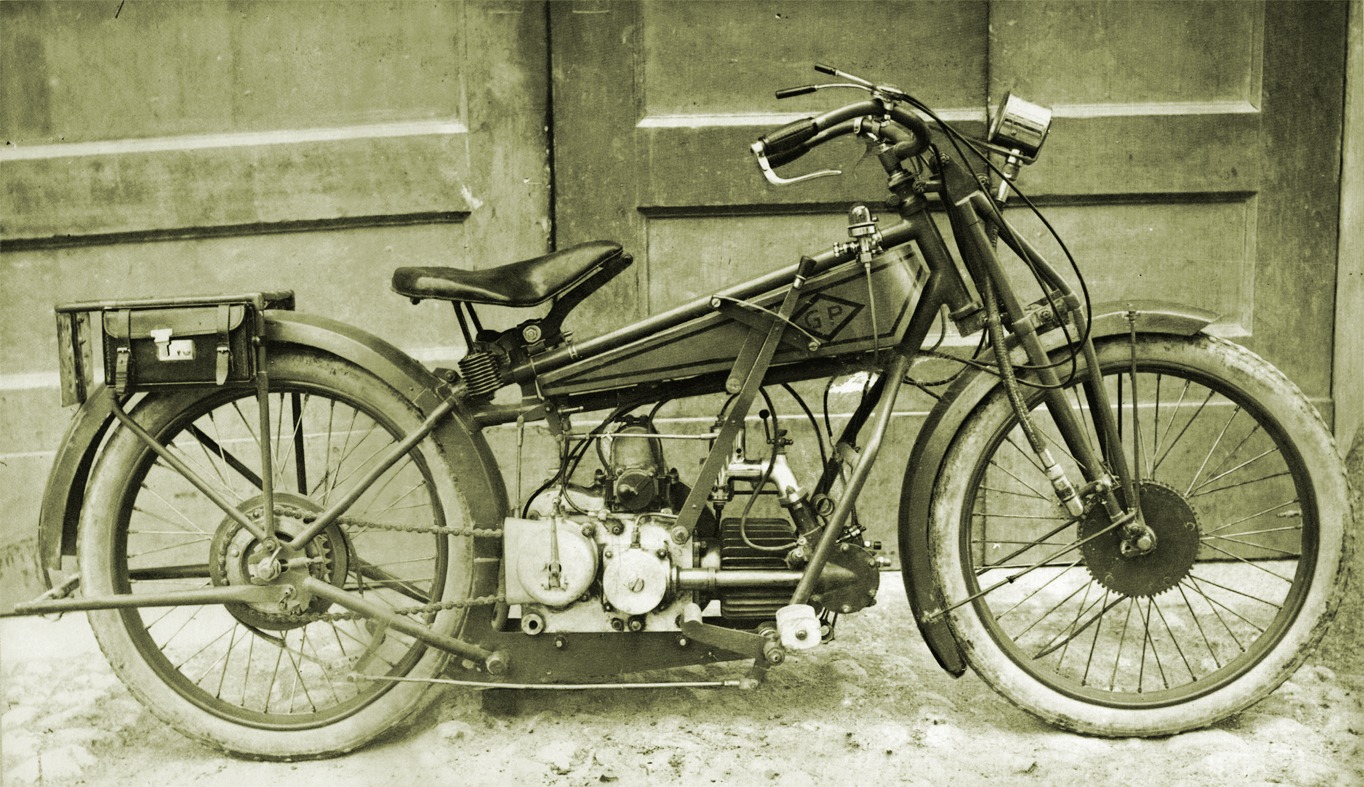
The prototype motorcycle was the G.P. 500 of 1919 which was a 500 cc single cylinder bike with a conventional design tubular steel frame with girder forks at the front and rigid frame at the rear.
The G.P. 500 only had a rear brake, and front brakes were introduced on the first production model, the Normale.
The initials G.P. stood for Guzzi Parodi and the company may have continued under that name. However the Parodi family decided they wanted their name to be kept low-key and so the motorcycles were named Moto Guzzi instead.
The new company was established in Genoa, with the workshop being in Mandello by Lake Como, and Moto Guzzi has remained there ever since.
For their first full production model Carlo Guzzi made the decision not to stay with his complex double valve SOHC prototype engine because of the difficulties associated with it, both in manufacturing and in maintenance.
That original engine had been designed with an oversquare bore/stroke ratio of 88 x 82 mm. The overhead camshaft actuated the twin inlet and twin exhaust valves and the design allowed the use of larger diameter valves than would otherwise be possible.
The camshaft was actuated by a shaft with bevel gears for reliability. The engine used twin spark plugs which were fired by a single Bosch magneto.
These technical design features were as used on aircraft engines and Carlo had learned about these things in his wartime service with the Regia Marina servicing seaplanes and other naval aircraft.
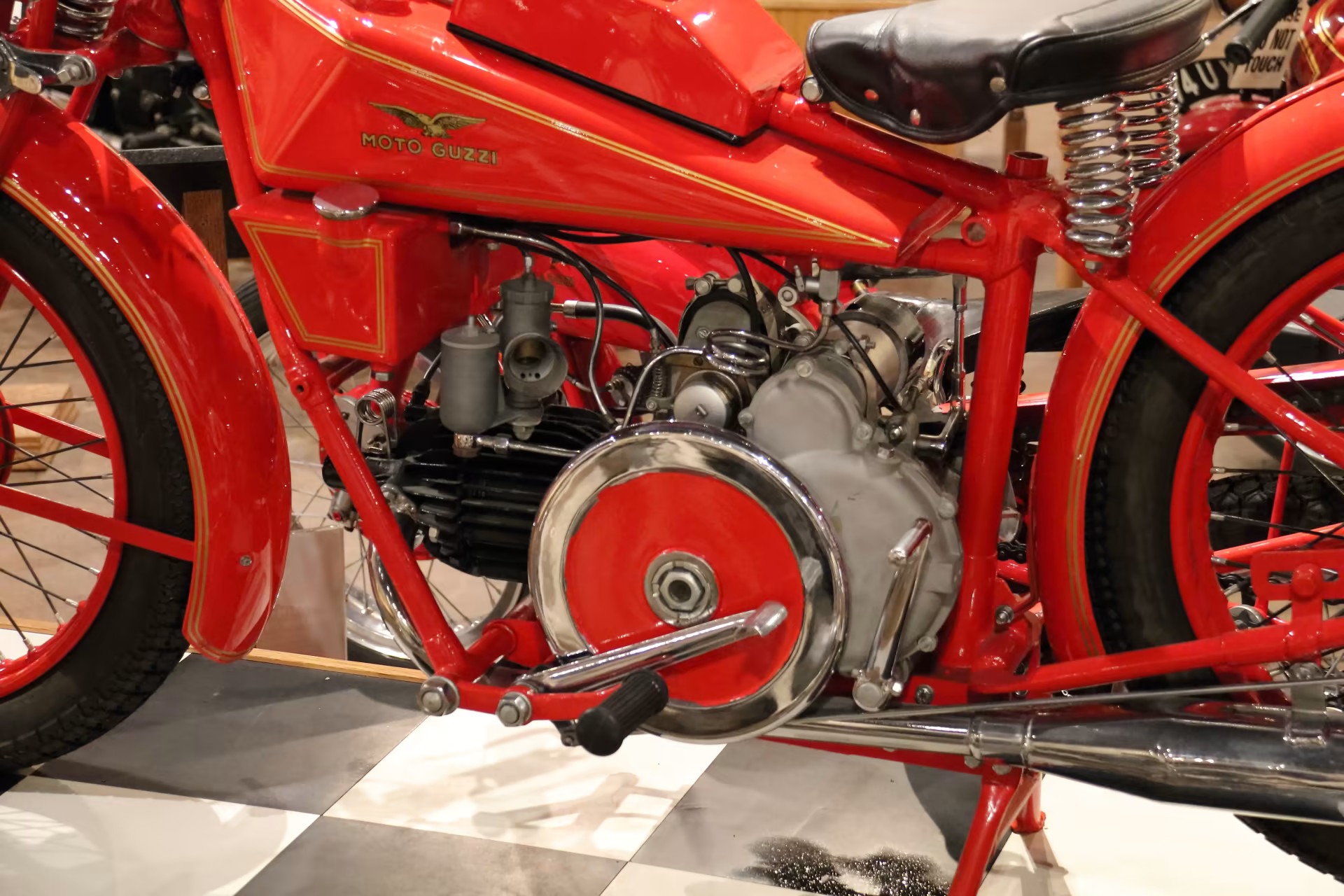
The production Exhaust Over Inlet engine was of the same dimensions and capacity as his SOHC engine. The use of an exhaust over inlet arrangement enabled the placement of the hottest part of the engine in the front of the air flow when the bike was moving providing the best possible cooling and the cast iron cylinder and head was given longitudinal radial fins for cooling.
For the stability of the crankshaft of his prototype engine he had fitted a large external flywheel which subsequently gained itself the nickname the “slicer” or “bacon slicer” and this design carried over to the production motorcycles and became something of a Moto Guzzi feature in subsequent years.
As on the G.P. 500 prototype the Exhaust Over Inlet production motorcycle was made with a unit construction design with the same aluminium alloy housing containing the engine’s crankshaft and the gearbox.
This housing was sand-cast in two parts divided vertically; the left side contained the transmission gears and the multi-plate clutch while the right side contained the timing control mechanisms.
For the production models Carlo Guzzi greatly improved the lubrication system from the full loss system of the G.P. 500 which needed periodic application of the oil hand pump.
For the production models an oil tank was provided and connected to a mechanical oil pump which pumped the oil from the tank directly into the crankshaft. The oil that accumulated in the bottom of the crankcase was then pumped back up into the oil tank.
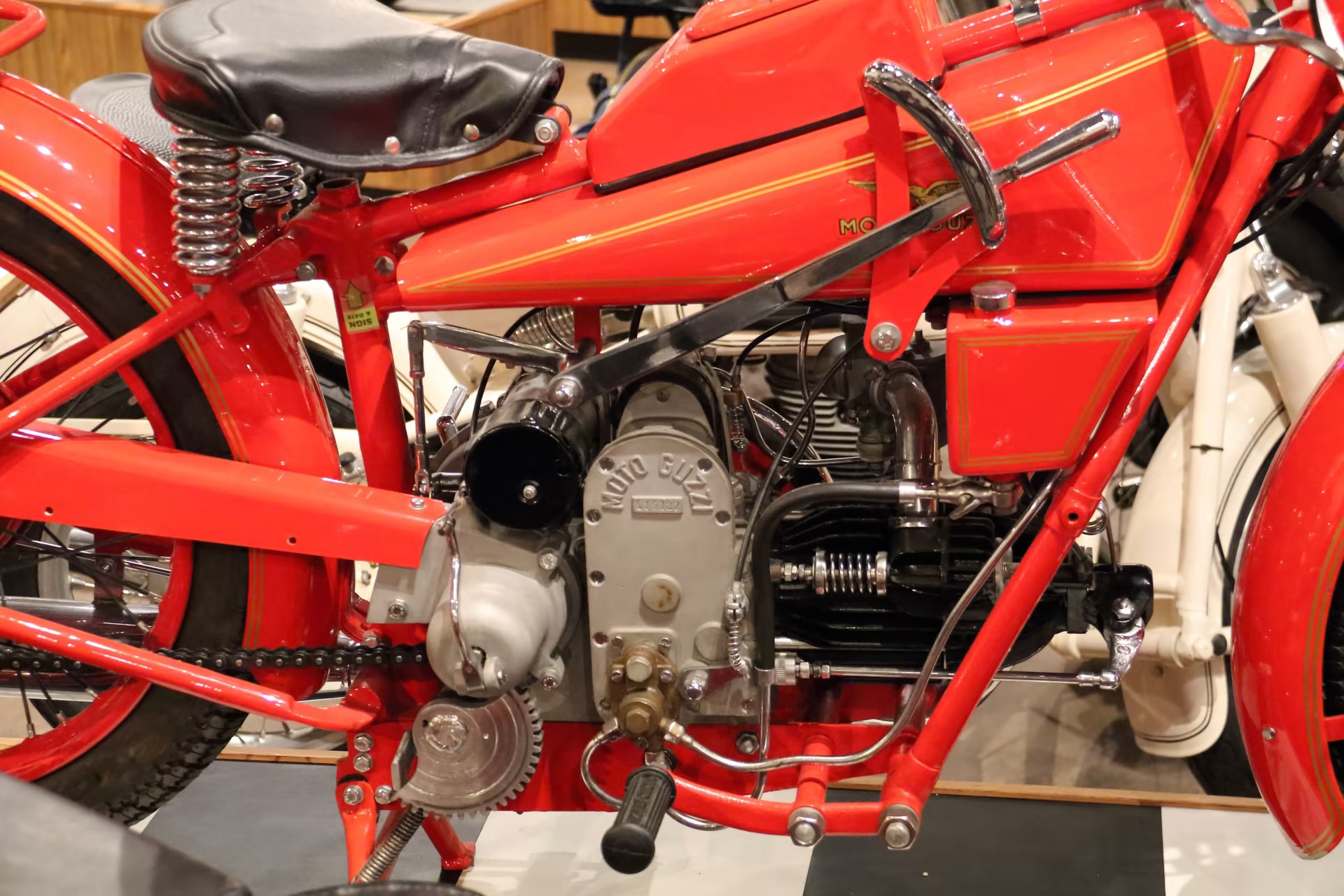
The pistons were of aluminium alloy and had two rings. The connecting rods were of nickel steel and featured a tubular centre section and used bronze bearings. The crankshaft ran on roller bearings.
The dual spark plug arrangement of the G.P. 500 was simplified to a single spark plug and Bosch magneto.
This first production model was called the Moto Guzzi Normale – presumably because Carlo Guzzi had not been able to build the more radical double valve SOHC bike he had dreamed of, but instead had to create something “Normal” for regular production and sale.
The Normale served to be a much admired and popular motorcycle however and proved itself, and the company that created it, to be of excellent quality and value.
A 1920 Moto Guzzi “Normale” For Sale
For aficionados of the early Moto Guzzi motorcycles an early example is coming up for sale by Mecum Auctions at their From the John Parham Estate Collection 2023 to be held over September 6-9, 2023.
To the best of my knowledge Moto Guzzi did not officially begin full scale manufacture of its Moto Guzzi Normale model until the company was officially formed in 1921: so it would be interesting to trace the history of this particular bike which appears to pre-date the official forming of the company.

Picture Credits: Picture of the G.P. 500 courtesy Wikipedia Italy. All pictures of the sale 1920 Moto Guzzi Normale courtesy Mecum Auctions.

Jon Branch is the founder and senior editor of Revivaler and has written a significant number of articles for various publications including official Buying Guides for eBay, classic car articles for Hagerty, magazine articles for both the Australian Shooters Journal and the Australian Shooter, and he’s a long time contributor to Silodrome.
Jon has done radio, television, magazine and newspaper interviews on various issues, and has traveled extensively, having lived in Britain, Australia, China and Hong Kong. His travels have taken him to Indonesia, Israel, Italy, Japan and a number of other countries. He has studied the Japanese sword arts and has a long history of involvement in the shooting sports, which has included authoring submissions to government on various firearms related issues and assisting in the design and establishment of shooting ranges.

